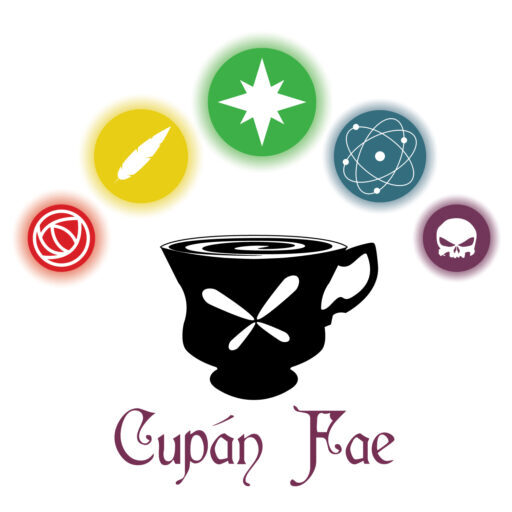Every now and then when the world allows, Cupán Fae hosts its own book club to discuss craft books that we’ve read. At the start of the year, we tried our hand at reading Timothy Hickson’s On Writing and Worldbuilding. In this review, we’ll be looking at some of the pros and cons of the book as a tool for writers.

PROS: What does the it do well as a craft book?
There are a lot of pros to this book. As an opening to the year, it made an interesting and engaging read and provided heaps of discussion. We’ve taken to breaking books down into chunks of several chapters, as online discussions are slightly trickier than in-person ones when talking about books.
Easy topic breakdown
A cursory glance at the table of contents will shed light on the topics explored in the book. While many craft books for writing will focus on rules and the generally accepted conventions of storytelling, On Writing and Worldbuilding takes a broad approach to writing and examines storytelling rather than grammar.

Each chapter in the book breaks down the topics into several smaller sections, making for easy navigation and re-reading. Hickson’s advice is easy to follow, and presented in a clear and conversational manner. The book as a whole reads as if narrated by the author for his YouTube channel, making for a pleasant read even in disparate times.
As a group, we were especially appreciative of the breakdown of topics, which includes villain motivation, ‘The Chosen One’ and magic systems. Our inner- and outer-nerds loved that there was so much in the book relating to fantasy. A lot of the craft books we’d looked at before were focused on fiction broadly, directed at grammar and the rules of writing.
Fantastic fantasy examples
Every chapter in On Writing and Worldbuilding opens with the list of texts that Hickson addresses in his examples to make his points clearer and more relatable to his readers.

The list is helpful for several reasons. It:
- let us know whether we would have experience with the texts to be discussed
- provided a spoiler warning for texts we hadn’t read or watched
- provided sources for examining the topics within the chapter directly, with author names to make searching easier
- confirmed that the examples would be drawn from SFF texts, allowing us – as readers – to settle into writing topics in a comfortable environment
While the lists vary in length and diversity, it still served as a helpful tool in the book, and allowed for broader discussions on the topics based on what we were all familiar with.
Approachable writing
I’ve said it already, but it bears repeating: Timothy Hickson writes in an approachable, conversational tone. That alone makes it stand out compared to other craft books that lean towards the academic. Even if most of the content was familiar to us already, as a group, having someone explain the topics in more easily digestible language made us love the book from the get-go.
Hickson’s style of writing is definitely a standout feature of the book outside of the topics explored. In that regard, On Writing and Worldbuilding is perfect for newbies to craft books.
CONS: Where can Hickson improve for Volume 2?
There isn’t much that I could address on this without re-reading the book in its entirety for the express purpose of finding something wrong. The main issue was expressed by one our members: the book relies too much on examples from Avatar: The Last Airbender.
Don’t get me wrong. I love Avatar. Hickson obviously loves it too.
But by using Avatar so much, Hickson made it difficult for some people to really appreciate the examples that otherwise provided clarity. I’ve heard tell that he’ll be easing up on it for Volume 2, in order to avoid isolating his audience any further.
Is it a recommended craft book?
I would say yes. I’m a hoarder of books, and have shelves of craft and writing related books. I only became aware of On Writing and Worldbuilding as a result of the book club for Cupán Fae, and it’s already up there as one of my favourites. It’s especially recommended for writers of Fantasy and Science Fiction, as few other books that have reached a wide audience deal with genre fiction so directly.
Volume 2 is due for release at the start of December 2021.
